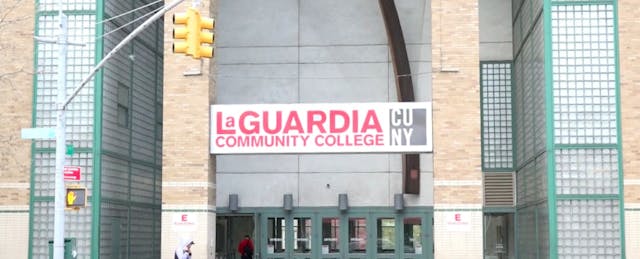“CUNY is now at a pivotal moment,” the City University’s draft Master Plan reads. Earlier this year Gov. Andrew Cuomo (D-N.Y.) echoed those sentiments in his State of the State address where he reiterated his plan to make all public colleges in the state tuition-free for families making under $125,000 a year. His proposal has New York City community colleges scrambling to “leapfrog” digital innovation to meet the expected surge in student enrollment.
The number of new students in the CUNY community college network has fluctuated between the boroughs over the last five years while resources have remained scarce. However, with the expectation of increased state funding and student demand, CUNY community colleges are ramping up online courses offerings and full-fledged degrees in hopes to provide space for all the new students.
According to the CUNY 2016 Student Experience Survey, 21 percent of the system’s community college students were not able to take required courses, most citing “lack of seat availability” as the reason. In an interview, George Otte, CUNY’s director of academic technology, described the “bottleneck” created by course shortages. Students were not able to take required courses because demand for space exceeded capacity—a problem that could get worse if more free tuition-seekers pour in. “We have always had lots of enrollment, which is one of the reasons I think we were late to the online course offerings. Our mission was never to gain students from the outside,” he explains, “but we are just beginning to realize that this has an enormous impact on capacity.”
“The real challenge is that eligibility is predicated on full-time enrollment,” Otte says, citing a caveat community colleges cannot ignore. Without taking 15 hours a semester, which equals full-time enrollment, students are not eligible for Gov. Cuomo’s free tuition program—the Excelsior Scholarship. However, at least half of community college students work full-time. It is unlikely that such a population can opt-in to campus-based instruction that requires them to commute and show up for courses offered only at, say, 9 a.m. or 4 p.m. “The assumption is that students will be much more likely to carry 15 credits if one or two of those courses were online—no commuting time, no daycare issues. Students can do them on the time they have available,” says Otte.
In the past, students couldn’t take courses from multiple campuses while enrolled in a particular college, but now officials are encouraging them to do things like enroll in one course from Manhattan Community College and another offered at the Laguardia campus. A new Global Search tool released last July helps students find classes that suit their schedules and meet graduation requirements, drawing from multiple colleges in the network. "Students will be able to search for general education online courses across campuses, by general education category, by mode of delivery, and by the ‘Zero Degree’ approach,” explains Otte. However, the tool has some permission restrictions making it difficult for students to access and use—something Otte says he hopes to change soon.
Courses aren’t the only thing going online. CUNY wants to make all student services digital, so learners will be able to attain a full Associate's Degree from the web—something none of the community colleges in New York City currently offer. There are plans to add web-based registration, orientation, attendance services, and a more expansive OER library before 2020.
The need for expansion, however, is based on the assumption that student enrollment will increase in community colleges—a claim some officials contest. According to recent reports from Buffalo, New York, some community college officials fear Cuomo’s proposition to make four-year colleges free will reduce the need for community colleges, whose demand they claim stems from its relative affordability in comparison to four-year institutions. But Otte notes that for students who do not get the new scholarship, tuition will rise, which means some students will still not be able to afford CUNY’s four-year college cost.
Without knowing precisely what the enrollment numbers will be, Otte and his team are still pushing to make sure students are prepared for the shift to digital. He serves as an advisor to the online education presidential task force which plans to issue a report detailing online education expansion plans in the near future. “If there was one thing I could change when I first started this,” Otte remarked, “it would be the way we set up online courses in the past. I would have installed built-in quality controls, course review tools, regular updates and allowed the curation of online instruction. We made a mistake when we left the responsibility of building and scheduling the online courses to the instructors. But hopefully, if we leap-frog, we can make up for lost time.”


